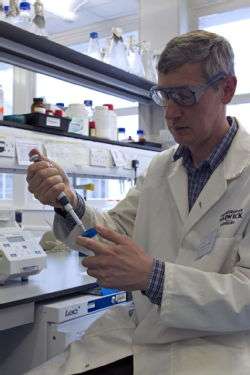Next generation of bioplastics could be made from trees

A research project led by Biome Bioplastics, aided by research conducted by the University of Warwick's Centre for Biotechnology and Biorefining, has demonstrated the feasibility of extracting organic chemicals from lignin for the manufacture of bioplastics.
The results stem from a grant from the UK's innovation agency, the Technology Strategy Board, awarded to a consortium led by Biome Bioplastics in early 2013 to investigate lignin as a new source of organic chemicals for bioplastics manufacture, which could significantly reduce costs and increase performance of these sustainable materials.
Lignin is a complex hydrocarbon that helps to provide structural support in plants and trees. As a waste product of the pulp and paper industry, lignin is a potentially abundant and low-cost feedstock for the high performance chemicals that could provide the foundation for the next generation of bioplastics.
The research was undertaken in conjunction with the University of Warwick's Centre for Biotechnology and Biorefining led by Professor Tim Bugg, whose team has been working to develop methods to control the breakdown of lignin using bacteria and extract these chemicals in significant quantities.
The project has successfully demonstrated that bacteria can be effective in the selective degradation of lignin, and that the breakdown pathway can be controlled and improved using synthetic biology. Crucially, several organic chemicals have been produced at laboratory scale in promising yields that have potential use in bioplastic manufacture.
Initial scale-up trials on several of these target chemicals have demonstrated the potential for them to be produced at industrial scale, suggesting the commercial feasibility of using lignin-derived chemicals as an alternative for their petrochemical counterparts. Biome Bioplastics has also transformed these chemicals into a material that shows promising properties for use as an advanced bioplastic.
"Scientists have been trying to extract chemicals from lignin for more than 30 years. Previously, chemical methods have been used but these produce a very complex mixture of hundreds of different products in very small amounts. By using bacteria found in soil we can manipulate the lignin degradation pathway to control the chemicals produced," explains Professor Tim Bugg, Director of the Warwick Centre for Biotechnology and Biorefining. "This is groundbreaking work. We've made great progress over the last year and the results are very exciting. "
The next phase of the project will examine how the yields of these organic chemicals can be increased using different bacteria and explore options for further scale-up of this technology. The first commercial target is to use the lignin-derived chemicals to replace the oil-derived equivalents currently used to convey strength and flexibility in some of Biome Bioplastics' products, further reducing cost and enhancing sustainability.
Paul Mines, CEO of Biome Bioplastics, commented: "We are extremely pleased with the initial results of the feasibility study, which show strong promise for integration into our product lines. Looking ahead, we anticipate that the availability of a high performance polymer, manufactured economically from renewable sources would considerably increase the bioplastic market."
Provided by University of Warwick



















